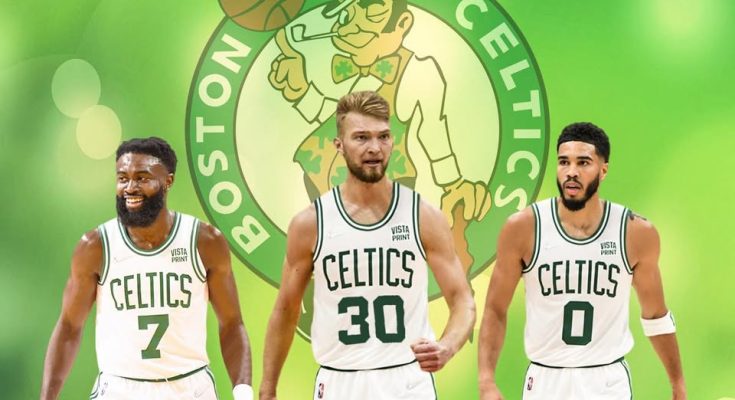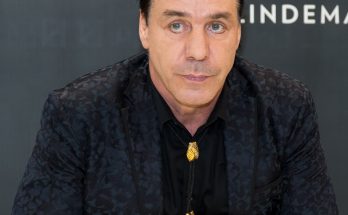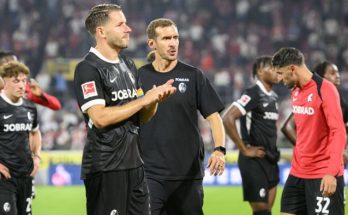In the fast-evolving world of NBA trade rumors, mock proposals often ignite passionate debate among fans, analysts, and even front-office insiders who monitor how the basketball landscape could be reshaped by a single blockbuster deal. The latest proposal making waves involves a scenario that would dramatically alter the Boston Celtics’ frontcourt, while simultaneously creating a ripple effect across the Western Conference. According to a bold mock trade outlined by @YahooSports, the Celtics would acquire All-Star big man Domantas Sabonis in exchange for a package centered around Anfernee Simons, Sam Hauser, Georges Niang, Neemias Queta, and two future first-round picks. The suggestion of such a move has left both Celtics supporters and broader NBA audiences asking a crucial question: Would Boston really pull the trigger on this massive swap?
To appreciate the magnitude of such a hypothetical trade, one must consider where the Celtics currently stand. Fresh off a dominant season, Boston’s roster is already viewed as one of the deepest and most versatile units in the league, anchored by stars Jayson Tatum and Jaylen Brown, and fortified by key role players who bring shooting, defense, and toughness. Their frontcourt, featuring Kristaps Porziņģis, Al Horford, and a collection of other bigs, has provided enough size and spacing to complement their wing-heavy offensive scheme. Yet, adding a player like Domantas Sabonis—known for his elite rebounding, passing ability, and interior scoring—could offer Boston a new offensive dimension. Sabonis, who has thrived with the Sacramento Kings, has emerged as one of the league’s premier playmaking centers, drawing comparisons to Nikola Jokić for his court vision and knack for orchestrating the offense from the high post.
What makes this proposal intriguing is how it challenges Boston’s current team-building philosophy. The Celtics have emphasized three-point shooting, switchable defense, and a balanced scoring approach that doesn’t rely too heavily on a traditional back-to-the-basket big man. Sabonis, while skilled, is not a three-point threat in the same mold as Porziņģis. However, his ability to facilitate the offense, dominate on the boards, and score efficiently inside could force defenses to collapse, creating open looks for Boston’s shooters. The idea of pairing Sabonis with Tatum and Brown, along with the potential floor spacing from Derrick White and Porziņģis (if they keep him), creates a tantalizing offensive puzzle that few teams in the NBA could match.
The price, of course, is steep. Anfernee Simons, a dynamic guard who has proven to be one of the league’s better young scorers, is the centerpiece of the outgoing package. Although Simons is not currently a member of the Celtics, this proposal would presumably involve Boston acquiring him in a preliminary deal or as part of a three-team structure, making this more complex than a standard one-for-one swap. Simons brings elite shot creation and perimeter scoring, which could entice Sacramento if they were looking to bolster their guard rotation alongside De’Aaron Fox. Sam Hauser, one of the Celtics’ best shooters, has carved out a crucial role in spacing the floor and punishing defenses that sag off the corners. His inclusion would be a blow to Boston’s offensive depth. Georges Niang, known as “The Minivan,” is another floor-spacing forward who could complement Sacramento’s rotation, while Neemias Queta is a developing big man with defensive upside. Throw in two future first-round picks, and you’re looking at a significant asset haul being sent out the door for Boston.
The fundamental question is whether Sabonis is worth that price tag. On one hand, Boston’s current roster is already championship-caliber. They don’t necessarily need a dramatic shake-up, and losing depth pieces like Hauser and Niang could hurt their bench production. On the other hand, NBA history has shown that superstar talent often wins out in the playoffs, and acquiring an All-NBA-level big man like Sabonis might give Boston an edge against tough Eastern Conference competition, particularly against teams like the Milwaukee Bucks or the Miami Heat, who often rely on physical play inside the paint. Sabonis’ high basketball IQ and passing ability could open up new offensive sets, especially in half-court situations where Boston sometimes struggles.
The trade’s plausibility is another matter entirely. The Sacramento Kings have little incentive to part ways with Sabonis, who has become the cornerstone of their resurgence alongside Fox. After years of mediocrity, the Kings have finally returned to relevance, thanks in large part to Sabonis’ leadership and consistent production. Would they really consider moving him for a package that, while solid, doesn’t guarantee an immediate upgrade? Anfernee Simons is talented, but does Sacramento want another high-usage guard when they already have Fox and Malik Monk? The draft picks might be attractive, but if Boston remains a powerhouse, those selections could fall late in the first round, minimizing their value. From Sacramento’s perspective, keeping Sabonis and continuing to build around him might be a safer bet than gambling on a package of role players and future assets.
For Boston, the deal represents a philosophical crossroads. General manager Brad Stevens has done a remarkable job assembling a balanced roster that fits modern NBA trends. Trading for Sabonis would signal a shift toward a more inside-out approach, relying on a big man to initiate offense rather than the wing-centric style that has defined the Tatum-Brown era. While this could yield a higher offensive ceiling, it also introduces questions about fit, spacing, and defensive matchups. Sabonis, for all his offensive brilliance, is not known as a defensive anchor. He’s a solid positional defender and rebounder, but he lacks the rim-protecting presence of a Porziņģis or a prime Horford. Would pairing Sabonis with Porziņģis work defensively, or would it create vulnerabilities against smaller, faster lineups?
Fan reactions to this mock proposal have been mixed, as is often the case with bold trade ideas. Celtics fans, who have watched their team consistently contend in the East, might feel reluctant to break up a winning formula. Hauser, in particular, has become a fan favorite for his clutch shooting and steady improvement. Losing him, along with valuable draft picks, could feel like an overpay, especially if Sabonis fails to deliver a championship. Others, however, see this as a golden opportunity to push all chips to the center of the table. The window for contention in the NBA can be fleeting, and acquiring a proven star like Sabonis could be the difference between falling just short and raising Banner 18.
One fascinating aspect of this proposal is the inclusion of Anfernee Simons. While not a current Celtic, Simons’ presence in the trade package suggests that Boston would need to orchestrate additional moves to make the trade viable. Could a third team, perhaps the Portland Trail Blazers, be involved to facilitate Simons’ transition to Sacramento? This type of multi-team trade is not uncommon in the NBA, but it does add layers of complexity. For Boston, giving up Hauser, Niang, Queta, and picks would already be a significant sacrifice. If they also had to give up assets to acquire Simons in order to include him in the Sabonis deal, the overall cost might become prohibitively high.
From a strategic standpoint, adding Sabonis would give Boston a unique offensive wrinkle. His ability to operate from the elbows, set screens, and deliver pinpoint passes could unlock even greater potential for Tatum and Brown as off-ball scorers. Imagine a scenario where Sabonis initiates a handoff with Brown, draws a double-team in the paint, and kicks the ball out to Tatum for a wide-open three. These types of actions could become commonplace, forcing defenses to pick their poison. Additionally, Sabonis’ presence on the boards would address one of Boston’s occasional weaknesses: securing defensive rebounds against bigger teams. In high-stakes playoff games, where every possession matters, having a rebounding force like Sabonis could tilt the scales in Boston’s favor.
However, the tradeoff in depth cannot be ignored. Hauser and Niang provide valuable shooting that keeps Boston’s offense humming, particularly in the second unit. Losing them would place greater pressure on other role players, such as Payton Pritchard and Oshae Brissett, to step up. The Celtics’ success in recent seasons has been due in part to their ability to maintain high-level performance even when their stars are resting. A thinner bench could expose them in long playoff series, where matchups and fatigue play a crucial role.
There’s also the question of chemistry. Sabonis is a team-first player, but integrating a new star into a well-established system is never seamless. The Celtics have spent years developing a specific style of play that emphasizes ball movement, perimeter shooting, and switchable defense. Introducing a player who thrives as the focal point of the offense could require adjustments that take time to implement. Would the Celtics be willing to endure a transition period, especially if it means sacrificing short-term cohesion for long-term potential?
On the financial side, Sabonis is under contract with the Kings, and his salary would need to be matched in any trade. The Celtics would have to navigate the intricacies of the NBA’s collective bargaining agreement, which includes luxury tax penalties and new restrictions for high-spending teams. Trading for Sabonis might push Boston further into tax territory, limiting their flexibility to make additional moves down the line. While ownership has shown a willingness to spend in pursuit of a championship, there’s always a balance to be struck between going all-in and maintaining sustainable success.
For Sacramento, moving Sabonis would be a seismic shift. He has become the heart and soul of their offense, forming a lethal pick-and-roll combination with Fox and helping the Kings return to the playoffs after a lengthy drought. Trading him for a package of guards and role players might feel like a step backward, unless the front office believes they’ve reached their ceiling with the current roster. The addition of Simons could give them another explosive scorer, but it would fundamentally alter their playing style. Instead of a frontcourt-centric attack, they would rely more heavily on perimeter play, which might not suit the rest of their roster.
The two first-round picks included in the proposal are another point of debate. While draft capital is always valuable, the Celtics are unlikely to finish with lottery picks as long as Tatum and Brown remain healthy. Late first-rounders, while useful for adding depth or as trade sweeteners, rarely produce franchise-altering talent. Sacramento would have to weigh whether those picks, combined with Simons and other role players, are worth losing a player who is arguably their most important asset.
The conversation around this trade also touches on the broader dynamics of the NBA’s arms race. With teams like the Denver Nuggets, Milwaukee Bucks, and Phoenix Suns loading up on star power, the Celtics may feel pressure to make a move that keeps them ahead of the curve. Standing pat could be seen as complacency, while making a bold trade like this signals a clear intention to dominate. History has shown that championship teams often require a mix of top-tier talent and role players who fit seamlessly around the stars. The challenge is determining whether Sabonis represents an upgrade significant enough to justify disrupting the current balance.
Another layer to consider is the impact on individual player roles. If Sabonis were to join Boston, how would that affect Porziņģis? The Latvian big man is at his best when he can space the floor and act as a secondary scorer. Pairing him with Sabonis might require one of them to adapt, potentially reducing Porziņģis’ three-point attempts or altering his defensive assignments. Horford, who has been a stabilizing force for Boston, might see his minutes reduced or his role changed entirely. These internal adjustments can sometimes create tension, even in winning environments.
From a stylistic perspective, Sabonis brings a unique blend of old-school post moves and modern playmaking. His footwork, touch around the rim, and ability to draw fouls make him a constant threat in the paint. Unlike many modern bigs who camp out on the perimeter, Sabonis thrives in the trenches, using his strength and intelligence to outmaneuver defenders. This could give Boston a new dimension, particularly against teams that struggle to defend the post. In the playoffs, when the game slows down and half-court execution becomes paramount, having a player who can generate high-percentage looks inside is invaluable.
Yet, there are concerns about how Sabonis performs against elite defensive teams. In last year’s playoffs, the Golden State Warriors exposed some of his limitations, particularly when facing aggressive double teams and switching defenses. While Sabonis is a great passer, his lack of outside shooting allows defenses to pack the paint, forcing him to make quick decisions under pressure. Boston would need to design schemes that maximize his strengths while mitigating these weaknesses.
Looking at the bigger picture, this trade proposal is a testament to the never-ending pursuit of improvement in professional sports. Even teams at the top of their game, like the Celtics, are constantly evaluating ways to get better. The question is whether the potential reward outweighs the risks. A championship window can close quickly due to injuries, aging players, or simply the rise of other contenders. Making a bold move for Sabonis could be seen as a proactive step to secure Boston’s place at the top.
If the deal were to happen, the narrative around the Celtics would shift dramatically. They would no longer be seen merely as a team with two elite wings and a supporting cast, but as a true big-three powerhouse with Tatum, Brown, and Sabonis. This trio could rival any in the league in terms of talent and versatility. The challenge would be finding the right balance between their skill sets, ensuring that each player gets enough touches while maintaining team chemistry.
The trade would also have ripple effects across the league. Other contenders would likely respond by exploring their own blockbuster moves, leading to a domino effect of transactions as teams scramble to keep pace. The Eastern Conference, already a battleground with teams like Milwaukee, Miami, and Philadelphia vying for supremacy, would become even more competitive. A Celtics team featuring Sabonis could force rivals to rethink their strategies, perhaps prompting them to add more size or defensive versatility to counter Boston’s new look.
From a fan perspective, the idea of seeing Sabonis in a Celtics uniform is both exciting and unsettling. On one hand, his blue-collar work ethic and team-first mentality align perfectly with Boston’s basketball culture. He’s the type of player who dives for loose balls, sets hard screens, and makes the extra pass—traits that resonate with a city that values toughness and unselfishness. On the other hand, the cost of acquiring him could alienate fans who have grown attached to players like Hauser, who represent the underdog success stories that fans love to root for.
In evaluating this proposal, it’s important to separate the emotional aspect from the strategic one. Championships are rarely won without taking risks. The Celtics’ last title came in 2008, when they swung for the fences by acquiring Kevin Garnett and Ray Allen to join Paul Pierce. That bold move paid off, delivering Banner 17 to the rafters of TD Garden. Could history repeat itself with Sabonis as the new centerpiece of a title run? It’s not out of the question.
However, not all risks yield rewards. There are countless examples of trades that looked good on paper but failed to translate to on-court success. Chemistry, health, and timing all play critical roles in determining whether a trade works out. The Celtics would need to be confident that Sabonis not only fits their system but also elevates them in ways that justify the loss of depth and future assets.
Another factor to consider is the development of Boston’s younger players. By trading for Sabonis, the Celtics might inadvertently stunt the growth of certain role players who thrive with more minutes and opportunities. Players like Payton Pritchard and Jordan Walsh could see reduced roles, which might hinder their long-term value to the team. While winning now is the ultimate goal, maintaining a pipeline of young talent is crucial for sustained success.
The debate around this mock trade will likely continue to swirl, fueled by social media discussions, podcast debates, and TV segments dissecting every angle. @YahooSports, which initially floated the proposal, has sparked the kind of conversation that makes the NBA offseason so captivating. Fans love to play armchair GM, envisioning what their team could look like with a few bold moves. While this particular trade may never come to fruition, it highlights the constant chess match that is team-building in the modern NBA.
The Celtics, for their part, are not known for making rash decisions. Brad Stevens and the front office have shown patience and prudence in their roster moves, often opting for incremental upgrades rather than wholesale changes. This approach has kept them competitive year after year, but it has also led some to wonder if they need to be more aggressive to get over the hump. Adding Sabonis would be the ultimate statement of intent, a declaration that they are willing to sacrifice tomorrow’s assets for today’s glory.
In conclusion, the proposed trade of Domantas Sabonis to the Boston Celtics for Anfernee Simons, Sam Hauser, Georges Niang, Neemias Queta, and two future first-round picks is a tantalizing yet complex scenario. It raises questions about value, fit, and long-term strategy that go beyond simple talent evaluation. For Boston, the decision would hinge on whether they believe Sabonis is the missing piece that can push them to a championship. For Sacramento, it would require a willingness to part with a player who has been central to their recent success. While the debate rages on, one thing is certain: the mere suggestion of this blockbuster deal has already reshaped how fans and analysts view the future of both franchises, sparking conversations that will continue until the trade deadline and beyond.



